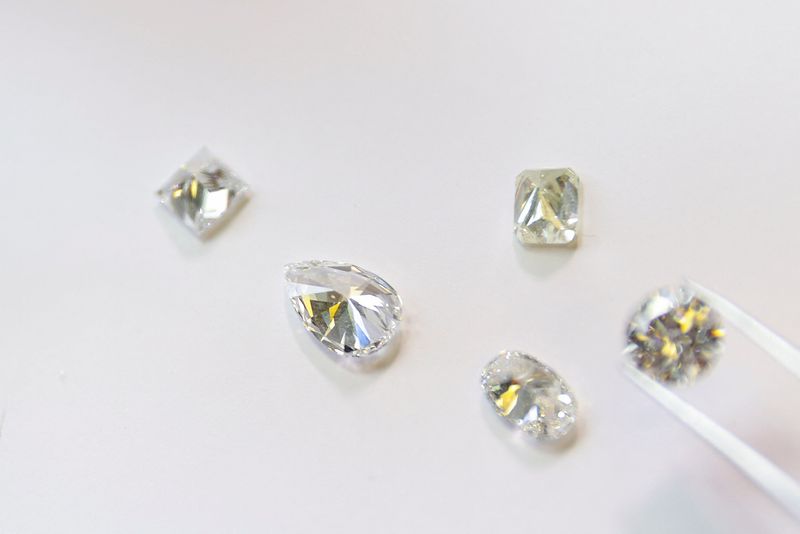By Julia Payne
ANTWERP, Belgium (Reuters) - Only a few weeks after Russia invaded Ukraine in February 2022, Antwerp-based diamond dealer Thierry Tugendhaft started receiving calls from big jewellers in Paris asking him to stop supplying them with Russian stones.
He was not the only one. Other diamond firms in Antwerp, the world's biggest centre of trade in rough diamonds and cutting of the biggest gems, were asked to avoid Russian stones. No easy task when Russia supplies about one third of global demand.
Now, Western powers want to make the boycott official with a formal ban on Russian stones. A G7 announcement has been expected for some weeks but disagreement over the details is holding things up, a source with knowledge of the matter said.
Major Western jewellers, from Tiffany's to Cartier and Van Cleef & Arpels have all been keen to distance themselves from Russia's lucrative diamond trade.
Imports of Russian rough diamonds are now at less than 5% of pre-war levels, the source said.
Tugendhaft, the head of T. Diamonds BVBA, said about 50% of his rough diamonds used to come from Russia due to their high quality. His buyers gave him just six weeks to find alternative supplies.
"The transition was quite fast because we were already in discussions with Canada, while we were still buying from Russia," Tugendhaft said from his office in the Antwerp diamond club. His company now sources about 80% of its diamonds from Canada and the remainder from African countries including Lesotho, South Africa and Botswana.
Other Antwerp dealers were less nimble, Tugendhaft said, and had to suspend their rough stone trade because European banks would not finance their Russian supplies. Some 90% of the world's diamonds are now cut in India.
Even though diamonds generate only a fraction of the revenue from oil and gas, they still bring the Kremlin more than $4 billion a year through state-owned Alrosa, the world's biggest producer of rough stones.
With Russian oil and gas already under sanctions to diminish the Kremlin's ability to finance its invasion of Ukraine, the United States, Canada, Japan and the European Union now want to curb Moscow's diamond revenues as well.
Belgium seems to be one step ahead. The port city of Antwerp has been a diamond hub since the 15th century and even though gem cutting is now mostly outsourced to India, the city still dominates the trade of rough and large stones.
TRACEABILITY
The U.S., Canada, Japan and the EU are weighing different proposals to ban Russian stones from their markets, submitted by Belgium, India, France and the World Diamond Council. Belgium was asked by the EU to draft a proposal and it hopes to retain Antwerp as the main hub for rough trade.
The main problem in banning Russian diamonds from Western markets, which account for 70% of global diamond jewellery demand, is how to trace the origin of the stones.
Tugendhaft, who has been in the diamond business for 30 years, said traceability was already quite advanced at his firm, which uses a helium scanner to produce three dimensional images at every stage of diamond processing which are then put in a blockchain ledger along with dates and invoices for every movement in the manufacturing process.
It costs a few percent of his revenue and he said not only would a full Western ban on Russian gems be costly for the industry, it could take another year to implement fully. Antwerp is the only location that can handle the rough volume and customs and shipment costs would add up, he said.
The biggest diamond miner by value, De Beers', uses a blockchain called Tracr. Other systems exist, but the technology's use is not widespread across the industry.
"The real problem is the really small stones. They come in parcels of 20,000-40,000 stones. How do you take every stone and put it in a blockchain? It's just not realistic," he said.
Most proposals under consideration by the G7 now focus on rough diamonds of 1 carat and above initially.

Once a diamond is cut, reliably tracing its origins becomes nearly impossible without details of the rough stone to match, industry sources say, which puts the onus on the initial sorting stage of the rough stones in Antwerp.
New technology may in time be able to determine the stone's origin by comparing it to the unique geology of the mines, but that technology is still under development.